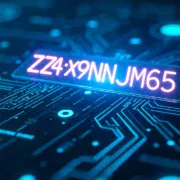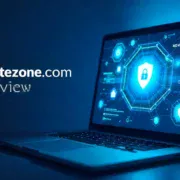
Learning has changed dramatically in recent years. Students and workers want more than just lectures and textbooks. They want hands-on experience that connects what they learn to real-world situations. This is where Duaction comes in as a game-changing approach to education and training.
Duaction combines theory with immediate practice, creating a powerful learning experience. This dual action learning model is gaining attention from educators, companies, and learners worldwide. People are discovering that when you mix knowledge with action, learning becomes more effective and engaging.
This guide will show you everything about Duaction. You’ll learn what it is, how it works, and why it’s becoming so popular in modern education and corporate training.
What Is Duaction?
Duaction is a learning model that blends theory and practice into one seamless experience. The name comes from combining “dual” and “action,” which perfectly describes its core concept. Instead of learning facts first and applying them later, students learn by doing from day one.
This approach flips traditional education on its head. Rather than sitting through long lectures, learners dive into real projects while learning the theory behind them. It’s like learning to swim by getting in the water with a coach, not by reading about swimming techniques for months.
The Duaction model focuses on experiential learning where students actively participate in their education. They work on hands-on projects, reflect on their experiences, and get continuous feedback. This creates a learning loop that helps knowledge stick better than traditional methods.
The Core Principles of Duaction
The foundation of Duaction rests on three key principles that make it effective. First, it integrates theory and practice seamlessly. Students don’t just memorize facts; they apply what they learn immediately through projects and real-world scenarios.
The second principle involves reflection and feedback cycles. After completing tasks, learners think about what worked, what didn’t, and what they learned. This reflective practice helps deepen understanding and improves future performance.
Active participation forms the third cornerstone of Duaction. Unlike passive learning where students listen to lectures, this model requires full engagement. Learners work on projects, solve problems, collaborate with others, and take ownership of their education journey.
Duaction in Education
Schools and universities are embracing Duaction to make learning more engaging and effective. Instead of traditional classroom lectures, teachers design project-based learning experiences. Students might build a robot while learning physics or create a business plan while studying economics.
This approach transforms how subjects are taught across different grade levels. In elementary schools, kids might learn math by running a classroom store. High school students could study history by creating documentaries about local events. College students might learn marketing by developing campaigns for real businesses.
Applied pedagogy through Duaction increases student engagement significantly. When learners see the direct connection between what they study and how it applies to life, they become more motivated. Teachers report higher participation rates and better academic outcomes when using this approach.
Duaction in Corporate Training
Companies worldwide are adopting Duaction for employee development and upskilling programs. Traditional corporate training often involves sitting through presentations about company policies or industry trends. Duaction transforms this into interactive experiences where employees learn by solving real workplace challenges.
Workplace learning becomes more effective when employees can immediately apply new skills to their jobs. Instead of attending a workshop about customer service, employees might role-play difficult customer scenarios. Rather than reading about project management, they lead actual projects with guidance and support.
Organizations use Duaction to build practical competencies that directly impact job performance. Sales teams practice new techniques with mock clients. Engineers work on scaled-down versions of real problems. Marketing professionals create campaigns for internal initiatives before applying skills to major client projects.
Benefits of Duaction
One of the biggest advantages of Duaction is improved knowledge retention. When people learn by doing, they remember information much longer than through traditional methods. The combination of visual, auditory, and kinesthetic learning appeals to different learning styles simultaneously.
Hands-on skill development accelerates through this approach. Students don’t just know about concepts; they can actually use them. This practical competency makes graduates more attractive to employers and helps workers advance in their careers faster.
The dual action learning model aligns perfectly with modern workforce needs. Today’s jobs require problem-solving, creativity, and adaptability. Duaction develops these skills naturally through project-based experiences and collaborative learning environments.
Students report higher engagement and satisfaction with their learning experience. When education feels relevant and exciting, people are more motivated to continue learning throughout their lives.
Duaction vs Traditional Learning
Traditional education follows a lecture-based model where teachers present information and students absorb it passively. This approach worked well in the industrial age but struggles to meet modern learning needs. Students often struggle to see connections between classroom content and real-world applications.
Duaction flips this dynamic completely. Instead of passive absorption, students actively create, experiment, and solve problems. They learn theory as they need it to complete projects, making the information immediately relevant and memorable.
The differences in learner outcomes are significant. Traditional methods often produce students who can pass tests but struggle to apply knowledge practically. Duaction graduates demonstrate both theoretical understanding and practical skills that employers value highly.
Modern learners prefer active learning methods because they match how people naturally acquire skills. Assessment methods also differ dramatically, using portfolio-based assessment and real-world project outcomes to measure learning success.
Implementing Duaction
Successfully introducing Duaction requires careful planning and commitment from educators or trainers. The first step involves identifying learning objectives and designing projects that help achieve those goals. These projects should mirror real-world challenges that learners will face in their careers.
Facilitators play a crucial role in Duaction implementation. Rather than being lecturers, they become coaches and guides. They help learners navigate projects, provide feedback, and connect practical experiences to underlying theories and principles.
The methodology emphasizes creating safe spaces for experimentation and failure. Students need to feel comfortable making mistakes because that’s how real learning happens. EdTech tools can greatly support implementation through learning management systems and collaboration platforms.
Challenges of Duaction
Despite its benefits, Duaction faces several implementation challenges. Cost often presents the biggest barrier, especially for institutions with limited budgets. Creating hands-on learning experiences requires more resources than traditional lecture-based approaches.
Training educators represents another significant challenge. Many teachers and trainers learned through traditional methods and feel uncomfortable with more interactive approaches. They need professional development to develop facilitation skills and learn how to design effective project-based experiences.
Institutional resistance can slow Duaction adoption. Educational institutions often have established procedures and assessment methods that conflict with applied learning approaches. Managing diverse learning paces also presents ongoing challenges in project-based environments.
The Future of Duaction
The EdTech landscape increasingly favors interactive and practical learning approaches. As technology improves, creating realistic simulations and virtual experiences becomes easier and more affordable. This trend supports broader Duaction adoption across different subjects and industries.
Micro-credentials and digital badges align perfectly with Duaction principles. Instead of traditional degrees that certify completion of courses, these credentials verify actual skills and competencies. Learners can demonstrate what they can do, not just what they studied.
Skills-first learning continues gaining momentum in both education and corporate training. Employers care more about what people can accomplish than where they went to school. Duaction prepares learners for this reality by focusing on practical abilities from the start.
Conclusion
Duaction represents a fundamental shift in how we think about learning and development. By combining theory with immediate practice, this dual action learning model creates more engaging, effective, and relevant educational experiences. Students and employees who learn through Duaction develop both knowledge and practical skills simultaneously.
The benefits extend far beyond learners. Educational institutions report higher student satisfaction and better graduate outcomes. Companies see improved employee performance and faster skill development. Whether you’re an educator or business leader, Duaction offers a proven path forward for better learning outcomes.




